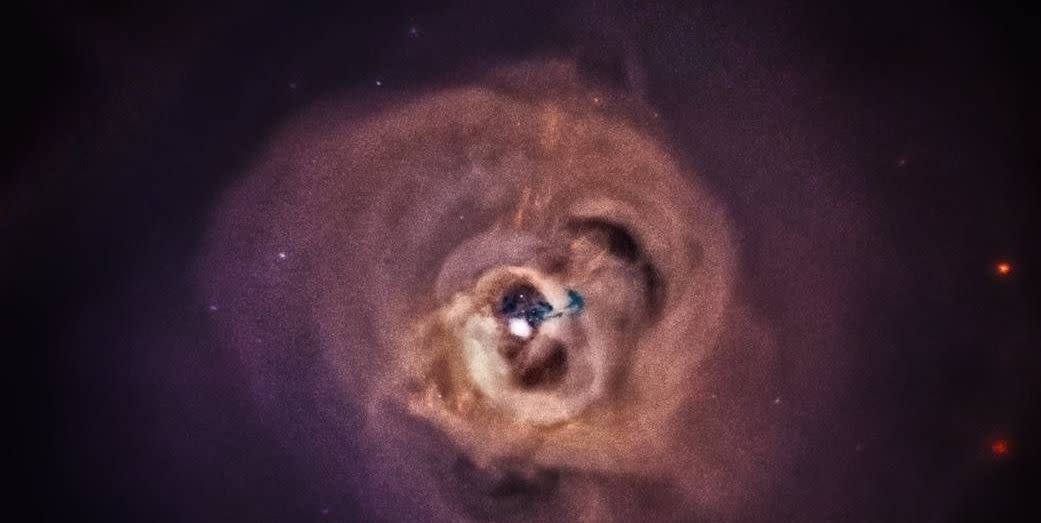NASA Experiment Weakens String Theory, but Doesn't Disprove It

NASA's Chandra X-ray Observatory helped power an experiment that might refute string theory.
Experimentation in real life based on string theory is still pretty new, with much to discover.
Scientists didn't find the particles they were seeking, which means one of a few different takeaways.
Could some observations from a faraway galaxy add up to a refutation of string theory? Researchers who study data from NASA’s Chandra Observatory think so.
It’s difficult to prove something’s absence from the universe, but in the Perseus galaxy cluster, scientists found no signs of a type of boson called an “axion-like particle” they say is integral to some kinds of string theory.
Rather than damning for any particular form of string theory, the researchers say this was really a special opportunity to test these theories firsthand. For five days, the Chandra X-ray Observatory combed the Perseus galaxy cluster for evidence of extremely low-mass particles including axions and axion-like particles. Axions are one thing, but more variable and convertible axion-like particles are the key item in this experiment.
Galaxy clusters are gigantic—so large that they’re the biggest single body of things that gravity can still hold together. At the heart of the Perseus cluster is a giant black hole, and it’s this flow and pull, into the black hole from the rest of the cluster, where Chandra used a full spectrum of x-ray signals to search for axions and axion-like particles. The tiny particles cause distortions that can be detected by the x-rays.
There's no way around it: The lack of evidence in this experiment is disappointing. If physicists are basically panning the universe for gold in the form of axion-like particles, they’ve gotten down to a strainer small enough to snag a billionth of an electron and still not found the gold. Now, they say, the options are more like Goldilocks: the axion-like particles are smaller than we thought, much larger than we thought (and therefore out of Chandra’s gauged range this time), or they’re just not there at all. This study is four times finer and 100 more powerful than previous observations could be.
String theory offers a way to harmonize all of physics together, something that was easier before scientists began to turn their minds toward outer space, posit the existence of bosons and other wildly tiny subatomic particles, and theorize about dark matter. It’s hard to believe there’s no unifying theory out there to be found, and intuitively we feel like the world is operating by some consistent idea.
But to formulate concrete suggestions and theories has required a great deal of calculation and position of these theoretical pieces that glue each theory together. If real observation doesn’t reveal the right glue, that helps scientists continue to develop their theories.
“These constraints dig into the range of properties suggested by string theory, and may help string theorists weed their theories,” coauthor Dr. Helen Russell said in a NASA statement.
You Might Also Like
